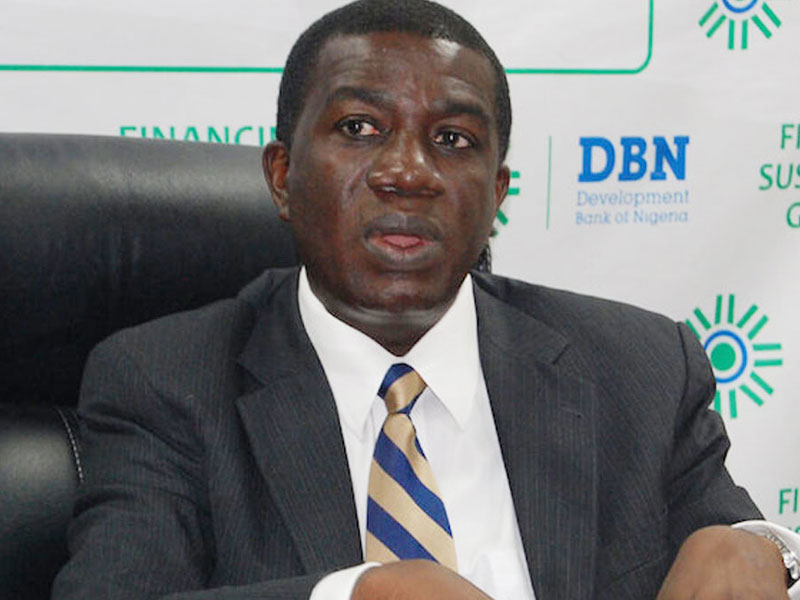The Development Bank of Nigeria (DBN) is a wholesale development financial institution (DFI) set up to alleviate the financing need of micro, small and medium scale entrepreneurs (MSMEs).
As a development bank, it was established to fulfil three mandates which are all targeted towards scaling up SMEs. The first, being the core of its mandates, is providing wholesale lending funds to financial institutions to on-lend to MSMEs.
The second is to provide a partial guarantee to financial institutions so as to encourage them to be able to provide accessible credit facilities to MSMEs, while the third is on capacity building, by rendering technical assistance to financial institutions to empower MSMEs.
Since inception in 2017, the bank through other financial institutions has so far extended N70 billion to about 50,000 MSMEs, according to a statement by Shehu Yahaya, chairman, board of directors for the bank.
The amount according to him, would go a long way in solving the biggest challenge for the over 41.5 million MSMEs in the country that have been starved of funds in time past.
Even though the development bank has been pushing out funds into the sector, many MSMEs are still left in the dark on how the bank operates and possible ways of accessing loans from the development banking institution.

How DBN operates
Unlike other financial institutions like the Bank of Agriculture (BOA), Bank of Industry (BOI), and NEXIM, the Development Bank of Nigeria does not lend directly to borrowers. Instead, it works with other financial institutions including Deposit Money Banks (DMBs) and micro finance banks to disburse to end borrowers.
Furthermore, unlike other financial institutions that focus on a particular sector of the economy, the DBN loans cut across all sectors of the economy.
What this implies in that MSMEs, irrespective of the sectors they play, can have access to DBN loans through its indirect financial institutions. You can access it in many of the banks in the country. Ask your bank about DBN loans and they may be helpful. The processes are usually clear.
The DBN collaborates with other financial institutions registered under its network to provide funding to MSMEs.
According to Tony Okpanachi, managing director of the bank, the DBN is currently working with 29 participatory financial institutions, cutting across commercial banks and microfinance institutions. Of these, 10 are commercial banks while the rest are micro finance banks.
Okpanachi noted that the bank plans to on-board as many financial institutions as long as they meet its eligibility criteria.
What does it take to be a financial institution?
According to the DBN, before a financial institution can be on-boarded, it must have been profitable in the last two years of applying.
After that, the prudential ratios of these banks are looked into. By prudential ratio, the bank means looking at the non-performing loans of these banks and by appraising how strong they are in the area of lending to the MSMEs. “We do not want to take a financial institution that is not interested in loaning to the MSMEs,” Okpanachi told BusinessDay.
He explained that the bank, from time to time, carries out monitoring and evaluation to ensure that these loans that the financial institutions have taken are used for the right purpose and the impact is felt.
What is the maximum amount DBN can lend?
According to the bank, the maximum amount of money it can lend to players in the micro segment is N10 million, while those in the small category is N150 million. Those in the medium corporates business can get as much as N600 million.
Okpanachi explained that by the time these businesses are growing to the point that the bank sees they can stand on their own and can get access to bigger funding, they move out from that circle.

What is the loan size of DBN?
In terms of the size of funds available to the bank in dollar terms, the bank has about $1.3 billion, made up of debt and equity. The shareholders of the bank who have provided equity include the federal government of Nigeria, who is the majority shareholder, the African Development Bank (ADB) and the European Investment Bank (EIB), including the Nigerian Soviet Investment Authority (NISA).
In terms of regulatory capital, the bank has about N100 billion. In terms of debt capital, it has the World Bank, African Development Bank, KSW of Germany and the French Development Agency (FDA) as debt providers.
Source: businessdayng




